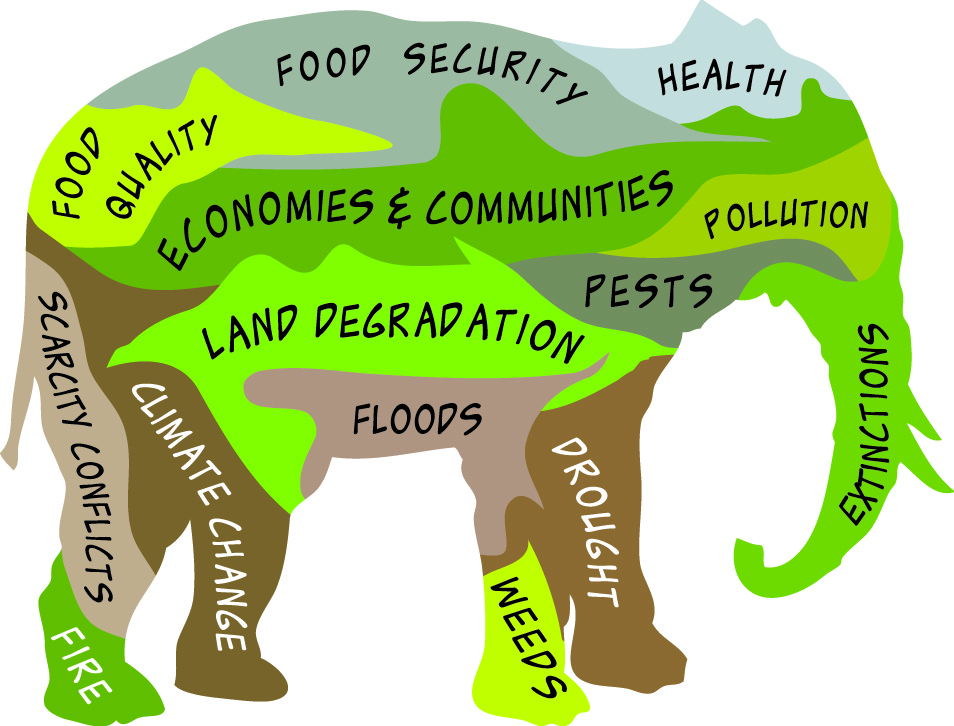
Five of the most common questions I get asked, by Peter Donovan
What species should I plant to sequester carbon in soils?
The imaginative, creative, and committed human manager. This person or people will be seeking long-term profit and production, a high quality of life, and the kind of soil function that can sustain these. An increasing diversity and abundance of plants and animals that enhance soil carbon and soil function, and sustain profit, production, and quality of life can be the natural outcome.
This is not just a technical issue, but a people one. We humans, with our beliefs, behaviors, and decisions have significant and long-term influence on our planet’s carbon and water cycles, as well as an extreme dependence on their function, for which carbon-rich slimes and glues that enable soil particles to form aggregates with pore space are key. Our most popular learning and feedback systems are not oriented around this interdependence.
What is the best management practice for sequestering carbon in soils?
Monitoring. If you want to grow more water-holding, fertility-enhancing soil, then establish some kind of baseline against which you can measure progress and results. It need not be a million-dollar research project.
After monitoring? Rule-based systems want practices, but principles can be a better guide. Practices vary. Like diets, they can be difficult to define except by what they are not, what they prohibit, such as no-till or various organic standards.
Principles to enhance soil health include: keep soil covered with residue and litter as much as possible, keep living roots in the soil for as long as possible, minimize tillage, and use a diversity of plants and animals over space and time. Learning to apply such principles requires creativity, experimentation, and failure.
Can carbon farming fix climate change?
The short-term answer is No. Global climate change is not something that can be fixed, not some kind of monster that can be slain. Although frightening and deadly, it is only a symptom. The underlying issue is the carbon cycle, which we humans have a strong influence on, and which has an enormous influence on the much more powerful water cycle.
Green plants remove carbon dioxide from the atmosphere in photosynthesis, and can sometimes store carbon in soils for a time with the help of microbes. But even with vastly increased rates of photosynthesis and accumulation in soils, the surface layers of the ocean will release carbon according to Henry's Law, slowing and buffering any decline in atmospheric carbon dioxide, as they have buffered its increase.
https://en.wikipedia.org/wiki/Oceanic_carbon_cycle#Atmosphere
The smaller-scale answer is Certainly, if we are thinking of microclimates, such as in the soil pore or at the surface of the soil, or even significant acreages of these. These in turn can create huge local benefits in moderating water, and in production and quality, and in resilience to the effects of global climate change.
The longer-range global answer is Maybe, if we deal with underlying causes. See below.
PS. "Carbon farming" can be a hope, and it may also turn into a result. Monitoring can tell the difference.
In order to regenerate soils, what needs to happen?
A vivid, specific, and practical sense that growing water-holding, carbon-rich soil is possible and practical.
There are certainly limiting and restraining forces and incentives, but some people have done this. As individuals, and as communities and societies, I believe we can learn to work with photosynthesis, the most powerful and creative planetary force. To do this we need effective learning systems: networked, open, broadly participatory, taking advantage of digital technologies and remote sensing, and oriented toward monitoring and feedback, not just prediction.
How can I be involved?
Manage land so as to slow down carbon and water cycling. Whether we are the owners, the principal decision makers, or somewhere outside of these circles, all of us influence the management of land with our choices and attitudes.
Use your power as a citizen and consumer. If you are one of the billion people on earth who have real choice in how you spend your money, keep in mind how your government's policy and your food choices mesh with the soil health principles above, and in this it helps to know your farmers and what their land looks like even in winter.
 Help your community and groups you are involved in focus on larger frames, on what they want and need, while acknowledging what they are against. Many of these larger frames or wholes will connect with carbon and water cycling.
Help your community and groups you are involved in focus on larger frames, on what they want and need, while acknowledging what they are against. Many of these larger frames or wholes will connect with carbon and water cycling.
I'll be talking about the opportunities for citizens, conservation districts, and school groups to participate in monitoring carbon and water cycling (the most powerful and creative planetary force), as well as introducing some free open-source data tools, around the U.S. in 2016: In California this February and March, at the National Conservation District conference in Reno, Nevada on February 1, and across the northern U.S. this spring and summer. If you or your group is interested, please do not hesitate to contact us.
I’ve had my turn. Now it’s your turn to enlist the creative power of questions: to ask these questions again, and more questions, of yourself and others. Important answers will emerge, perhaps even locally from leaders in your community who are doing good work.